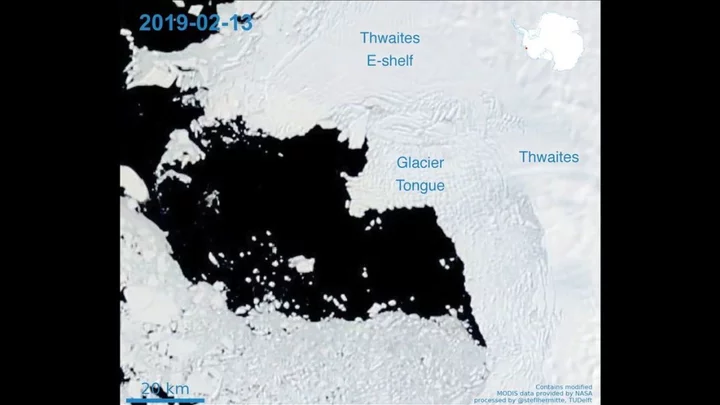Earth continues to surprise us.
One of our planet's large undersea volcanoes, the Hunga Volcano in the South Pacific, astonished scientists when it erupted in January 2022. The blast sent pressure waves around the planet. It blew a whopping 58,000 swimming pools worth of water into the atmosphere — an unprecedented amount. And the explosion's plume of ash and water reached over 35 miles high — the highest ever observed.
Now, researchers report observations of the same Hunga eruption in Tonga producing a lofty volcanic thunderstorm that produced the most intense lightning ever recorded. At its peak, the sprawling storm created 2,615 flashes per minute, smashing the previous record of 993 flashes.
"This series of events on Jan. 15 led to an extreme version of volcanic lightning that we've never seen before," Alexa Van Eaton, a volcanologist at the United States Geological Survey, told Mashable. Van Eaton led the research, which was recently published in the science journal Geophysical Research Letters.
"Really, everything about this eruption was supersized," she added.
SEE ALSO: Earth's core is wilder than you can imagineYou can see the lightning flashes, captured by satellites in space (such as NOAA's advanced GOES-17 satellite) and sensors on the ground, in the short video below. Each fleeting blue dot is a flash. Early in the eruption, the expanding storm created great rings of lightning over 150 miles wide, as the lightning appeared to ride the waves pulsing through the storm's colossal umbrella cloud.
"Really, everything about this eruption was supersized."The event underscored how a volcanic eruption can produce some of the most extreme weather on the planet.
"It turns out volcanic eruptions produce more lightning than any other process on Earth," Van Eaton said.
How a volcano created a massive storm
The dramatic light show was, dare one say, stoked by a perfect storm.
Even small volcanic eruptions can create lightning. But the Hunga eruption was a supercharged version. When the submarine volcano erupted, it blew torrid molten rock through the sea, creating a massive plume of water vapor. Up in the cold stormy atmosphere, the churning mix of water, ash, and hailstones created highly charged particles, Van Eaton explained. This made an excellent environment for lightning to pierce the sky.
"This eruption definitely created an extreme weather system," she said.
A rim of the greater Hunga volcano, as viewed from space before the massive eruptive event in January 2022. Credit: Maxar via Getty ImagesWhat's more, the lightning intensity wasn't the only record broken amid this volcanic tempest. Researchers also observed the highest lightning bolts ever recorded, between 12 to 19 miles above the ocean. Up there, in a part of the atmosphere called the stratosphere, there's typically no weather or clouds; but the great Hunga blast changed that, temporarily.
The historic eruption is not just a once-in-a-lifetime event of scientific intrigue. It allows volcanologists to better understand the risk posed by such submarine volcanoes, and to improve early detection. The episode triggered a tsunami, destroyed homes, and took lives. Such an explosion also poses a major threat to airplanes: The ash is volcanic rock, and if jet engines inhale the rocks, they can stall.
"This eruption definitely created an extreme weather system.""Volcanic ash in the atmosphere is a major hazard," Van Eaton noted. "Even if you're just taking a standard flight, something can erupt and put ash into the atmosphere. (For a harrowing account of one such event, see British Airways flight 009 in 1989. Volcanic ash stopped all four engines. Fortunately, skilled pilots glided down from the ash cloud and restarted the engines.)
Want more science and tech news delivered straight to your inbox? Sign up for Mashable's Light Speed newsletter today.
Indeed, the Hunga eruption was massive and triggered a record-breaking light show. But over the eons, Earth's volcanoes have certainly spawned even larger, more intense events — we just haven't seen them.
"In the geologic record there have been bigger eruptions," Van Eaton said.









